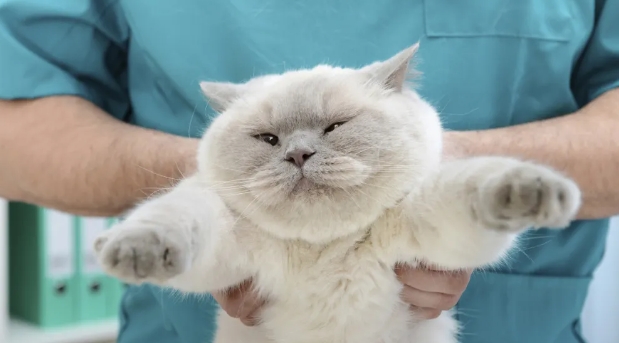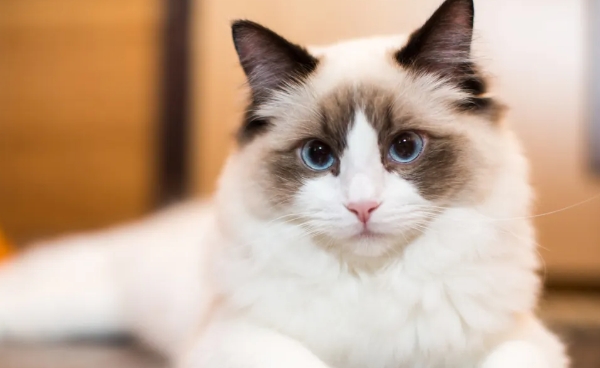Some cats are quiet and aloof, spending the whole day curled up in one spot, barely glancing at their humans even when they come home.Others are playful and clingy, full of energy from morning to night, always circling around their owners—sometimes making you wonder, “Am I obsessed with the cat, or is the cat obsessed with me?”Then there are cats who switch back and forth between being shy and social. At home, they’re lively and affectionate; but once outside, their personality flips, becoming timid and cautious.When living with a cold and distant feline roommate, humans may try to show warmth and affection—only to be repeatedly rejected. Rather than improving the relationship, this often drives the cat to hide in every corner of the house.It’s like an extroverted human paired with an introverted cat: both sides end up frustrated.For many cat parents, their pet’s ever-changing moods and unpredictable reactions can be downright confusing.So here’s the question: Do cats actually have distinct personalities—just like people?
1. People Have Personality, and So Do Cats
Scroll through any social media feed, and you’ll spot the classic MBTI meme: the extroverts (E-types) belting out karaoke like they’ve been reunited with long-lost siblings, while the introverts (I-types) quietly hide in the corner, turning a party anthem into a melancholic ballad. Sure, MBTI isn’t a scientifically foolproof personality tool, but its popularity highlights something universal: people are diverse, and so are their temperaments.Which begs the question—what about cats? Do they also have distinct personality types, like “I-cats” and “E-cats”?According to a study from the University of Lincoln’s School of Life Sciences, cats do exhibit unique, consistent behavioral traits—what scientists call “personality,” or temperament. Feline personality, much like in humans, refers to stable differences in behavior over time. Cats express their emotions through specific body language: arched backs, upright ears, curled-up postures. A puffed-up tail and aggressive hissing? That’s not a cute greeting—it’s fear in action.Just as humans are commonly grouped into five major personality traits, researchers have identified five core “cat personality traits”: Neuroticism, Extraversion, Dominance, Impulsiveness, and Agreeableness. In other words, yes—cats have their own MBTI-style framework.
2. Personality Is in the DNA
So where does your cat’s unique personality come from? According to current scientific understanding, it’s shaped by multiple factors—chief among them: age and breed.If your cat spends most of the day lounging around like it’s auditioning for a nap competition, the cause might be more than laziness. Beyond ruling out any health issues with a vet visit, take a moment to consider their age—senior cats naturally move slower.Breed also plays a notable role. While personality can vary widely within any breed, genetics do influence general tendencies. There’s a popular myth in China that black-and-white “cow cats” are more neurotic, or that orange tabbies are always mellow. But science says otherwise. Studies show little to no meaningful correlation between a cat’s coat color and aggressive behavior.While coat color and breed can be linked, you can’t reliably judge a cat’s temperament based on fur alone. In short: don’t let looks fool you—temperament runs deeper than what meets the eye.

3. How to Raise the Cat of Your Dreams
Just like children pick up habits from their parents, cats are shaped by their environment—and their owners. Aside from age and breed, a cat’s personality is subtly (and sometimes strongly) influenced by your own personality and behavior.That viral joke about cat parents posting ultrasound images of their “biological” kittens? They may be onto something. “Like owner, like cat” is more than just a meme.Most wild cats are solitary by nature, but house cats adapt to living closely with humans. This domestic lifestyle reshapes their social behaviors. The Lincoln University study also evaluated the owners’ personalities using the Big Five Inventory (BFI), and compared them with the five identified cat traits. The takeaway? A cat’s behavior and overall well-being are closely tied to their human’s traits—just like a child mirrors a parent.So, if you’re an ENTP—an energetic, talkative extrovert—don’t be surprised if your cat turns out to be a social butterfly, too. Your mood, stress levels, and energy all rub off. Raising a confident, affectionate cat takes not only love, but also emotional stability, patience, and an understanding of feline behavior.
4. When a Cat Meows Nonstop, It’s Actually Crying for Help
So you’ve researched breeds, selected your dream cat, and provided a calm, loving home. But suddenly, your fur baby starts meowing excessively or even acts out aggressively. What gives?The culprit might be environmental stress. Even cats of the same breed can have drastically different personalities based on upbringing. And one individual cat can behave like two different animals depending on the setting.Anyone who’s ever taken a cat to the vet knows this transformation. One minute they’re a snugglebug at home, the next they’re hissing, growling, and karate-kicking the clinic staff. That’s because cats are deeply sensitive to environmental changes. Whether it’s a vet visit or a short stay outside their comfort zone, it can trigger a stress response known as “feline stress behavior.”One major symptom? Constant meowing. This isn’t a quirky conversation starter—it’s a feline S.O.S. Cats meow excessively when they feel unsafe, anxious, or overwhelmed.In cat-speak, all that loud “meow meow meow” likely translates to one urgent message:“Help me! Please, someone get me out of here!”

In pet hospitals and apartment elevators, those timid little kitties—with their tails tucked and ears flattened like tiny airplane wings—look exactly like introverted employees at a company year-end party: heads down, shoveling food like it’s a mission, only to be suddenly called out by the boss.Clearly, the outside world is exciting, but also full of danger. On this point, socially anxious humans and small house cats seem to deeply understand each other.An interesting observation is that purebred cats and domestic mixed-breed cats exhibit very different behavioral shifts when taken outside. Rural or mixed-breed cats (commonly referred to as “Chinese rural cats”) tend to have the strongest reactions to stress and environmental changes. British Shorthairs come next, while Ragdolls show the least variation in behavior.This finding aligns with another study and supports what “cat people” have long joked about:“While domestic cats are great, purebred cats might just be a little more chill.”

